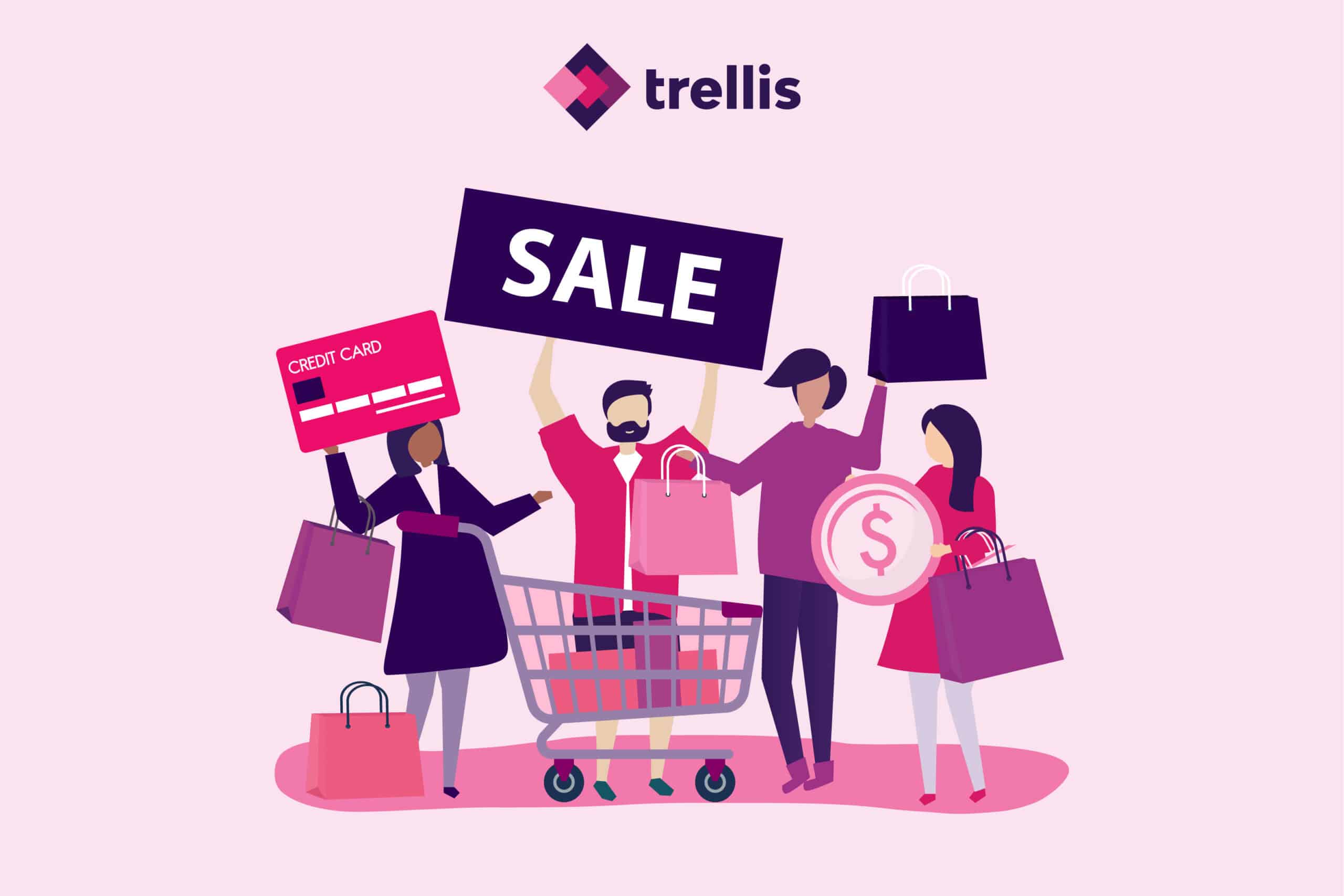We can all attest to the one time we bought a product on Amazon after the seller offered an irresistible discount. Or the many times we run to Amazon on Black Friday to grab heavily discounted deals on products.
Leveraging promotions is one of the quickest ways sellers can grow their Amazon business. A well-structured promotion, discount, or deal is usually the tipping point that convinces a buyer to purchase from you and not your competitors.
Today’s guide introduces you to the 4 types of Amazon promotions. We’ll explore the benefits and drawbacks of each to help you execute the best option for your products and goals.

4 types of Amazon Promotions
Now let’s dive into the four types of Amazon advertising promotions.
Deals
Typically, sellers on Amazon can offer two types of deals:
- Lightning Deals.
- 7-Day Deals.
Lightning Deal
Lightning Deals are promotions where a limited number of discounts are offered for a few hours on the Amazon Deals page. The customer will see the offer and countdown of the products still available for purchase.
The countdown, together with the percentage-off, creates a sense of scarcity, persuading customers to place an order for the promoted item.
Usually, these deals can last for 4-12 hours on the page. While you can select the week deals will run, you have no control over which day and time a Lightning Deal is displayed.
When setting up Lightning Deals, you must specify the number of units you wish to commit to the promotion.
The cost of running Lightning Deals depends on whether they are displayed on peak shopping days or not. For example, on non-peak shopping days, Lightning Deals can cost $150. However, the price shoots up during major shopping events like Cyber Monday, Black Friday, and Prime Day.
Lightning Deals works best for highly coveted items that customers may find hard to justify spending money on. Think of the latest Lego set, the ever-helpful Roomba, or an elegant cooking set.
A limited-time flash sale gives customers a much-needed reason to splurge on such items. Lightning Deals may not work as well for everyday products like grocery and cleaning products unless you’re offering an insane discount.
7-Day Deal
As the name suggests, 7-Day Deals run for seven days. But unlike the Lightning Deals, a seller has more control over the dates and time to run these deals. However, 7-Day Deals cost 2x more than Lightning Deals. Fees for 7-Day Deals can start at $300.
To run a 7-Day Deal, you must offer a discount of no less than 15% off.
To be eligible for the 7-day Deal, a product must meet the following criteria:
- Be in new condition.
- Be eligible for Prime delivery in all regions.
- Remain compliant with deal frequency policies.
- Remain compliant with pricing policies.
- Be compliant with customer product review policies.
- Not be offensive, embarrassing, or inappropriate.
In addition, the seller must have a professional seller account and at least 5 feedback ratings per month, and a rating of 3.5 stars.
Benefits of offering Deals on Amazon
- Limited-time deal badge creates a sense of scarcity, persuading consumers to buy.
- You have more control over the date and the time your deal appears with the 7-day deal. On the other hand, the Lightning Deal is a good fit for high-value products customers have been eyeing and waiting for a discount.
Drawbacks of offering deals on Amazon
- You’ll have no control over which time the Lightning Deals appear.
- You must offer at least 15% off your normal price to qualify. This could end up hurting your profitability.
Promos
Amazon promos give customers access to discounted shipping, free products, or a percentage off their purchase. Generally, there are 3 types of promos on Amazon:
Buy one(or multiple products) and get a new product for free
This promo is ideal for promoting a new product because it communicates huge savings and free items to consumers.
Percentage off discount
In this case, a seller offers a percentage off discount for a particular product. Customers will usually enter a promotion code to get a discount. In addition, sellers can opt for tiered discounts where if a customer buys one product, they get a discount on another.
Social media promo code
Here the seller receives a unique marketing page that they can share with customers and prospects, even outside Amazon— for example, through influencer marketing, social media, and email.
Benefits of Amazon Promos
- Can be used for off-Amazon marketing (For instance, social media campaigns).
- Sellers can offer multiple Promo Codes for one product or single-use promo codes.
Drawbacks of Amazon Promos
- They don’t appear in search results and hence do not improve CTRs.
- Social media promos last for 30 days only.
- Appear down below the fold and are hard for customers to spot.
- Can lower profitability if unstructured percentage-off discounts are used.
Prime Exclusive Discounts
These discounts are only available to Prime members. Prime Exclusive discounts appear on search results and on other big days on Amazon, such as Prime day. With Prime Exclusive Discounts, sellers can offer dollar or percentage off discounts or a discounted fixed price. Sellers can offer discounts between 10% to 80%.
Here are some criteria a product must meet to be eligible for Prime Exclusive Discount.
- Be Prime-shipping eligible, nationally.
- Meet all regular promo eligibility criteria.
- Have a 3.5-star rating or no rating.
Sellers must have a 4-star rating if the seller rating is applicable.
Benefits of offering Discounts on Amazon
- There is no charge for Prime Exclusive discounts.
- Amazon shows strike-through pricing and a savings message in the buy box on search results. This can improve the conversion rate and CTR of the promoted product.
- Products with Prime Exclusive discounts get an additional badge on Prime Day.
Drawbacks of offering Discounts on Amazon
- Stricter product eligibility requirements compared to coupons.
- Only valid for 60 days.
Coupons
For customers to redeem a coupon, the coupon must be clipped or clicked on to reveal the discount. Coupons generally appear on the coupon’s homepage, product details page, or inside the customer’s cart.
Coupons can increase your CTR because they are visible on search and ad pages. Discounts offered through coupons can last between one and 90 days. Moreover, the discount offered should be 5% to 80% off.
Sellers on Amazon will pay 60 cents($0.60) each time a customer redeems a coupon.
For example, if you offer 5 dollars off, each time someone redeems your coupon, you’ll lose $5.60 off the sale.
Coupons also give you a chance to limit who can access your coupon discounts; prime members, student members, or Amazon family members.
Benefits of offering coupons on Amazon
- All products are eligible for coupons.
- Are displayed on search results pages and can help improve the CTRs.
- Can be as low as 5% off the regular price.
Drawbacks of offering coupons on Amazon
- Can only be active for three months at a time.
- It takes 4 days for a coupon to be active.
Benefits of Amazon Promotions
Amazon seller promotions are used by Amazon sellers for various business growth tactics.
Boosting sales
Well-structured deals, coupons, and discounts help a seller increase sales throughout the promo period. From the customer’s perspective, these deals are attractive, limited, and a huge saving opportunity, so more consumers opt to buy a product during a promotion.
Improving organic visibility and rankings
In tandem with strong content, Amazon promotions are an opportunity for sellers to increase brand visibility. For example, offering a Lightning Deal will raise awareness about a certain product on the Today’s Deal page.
In turn, because of sales and customer reviews influx during a promotion, your products rank higher.
Clearing excess inventory
Amazon promotions can also help sellers do away with excess inventory quickly and profitably. It’s a win-win situation because, on the one hand, customers get discounted products, and on the other hand, sellers make space for newer inventory.
Maximizing shopping seasons
During shopping seasons, millions of customers visit Amazon looking for the best deals and discounts. Here are some statistics backing this up:
- 80% of shoppers around Christmas are influenced by the internet.
- In addition, 70% of people during the Christmas holidays shop online.
- In 2021, nearly 2 million more people compared to 2020 shopped from Thanksgiving Day through Cyber Monday.
- 85 % of consumers in 2021 planned to include online shopping in their holiday plans.
If you offer enticing promotions, you increase the chances of snagging customers, increasing sales, and driving your shop’s visibility and Best Seller Ranking through the roof.
Which Amazon promotion type should you choose?
There’s no right or wrong Amazon advertising promotion type. It all comes down to the goal you’re trying to achieve. Below are a few scenarios and the type of promotion that fits them best.
- Give discounts to all people and appear on search results: Offer Amazon Prime discounts and coupons.
- Prime day: Prime-exclusive discounts.
- Sending discounts to audience outside Amazon: Social media promotion.
- Unique promo code for each customer: Promo code discounts.
- Conditional discounts such as buy one, get a certain % off another product: Use promo codes.
If you want to learn more about how to grow your Amazon business, learn more on our blog.
If you want to learn how to leverage automation for your eCommerce business, talk to our team of experts at Trellis today.



